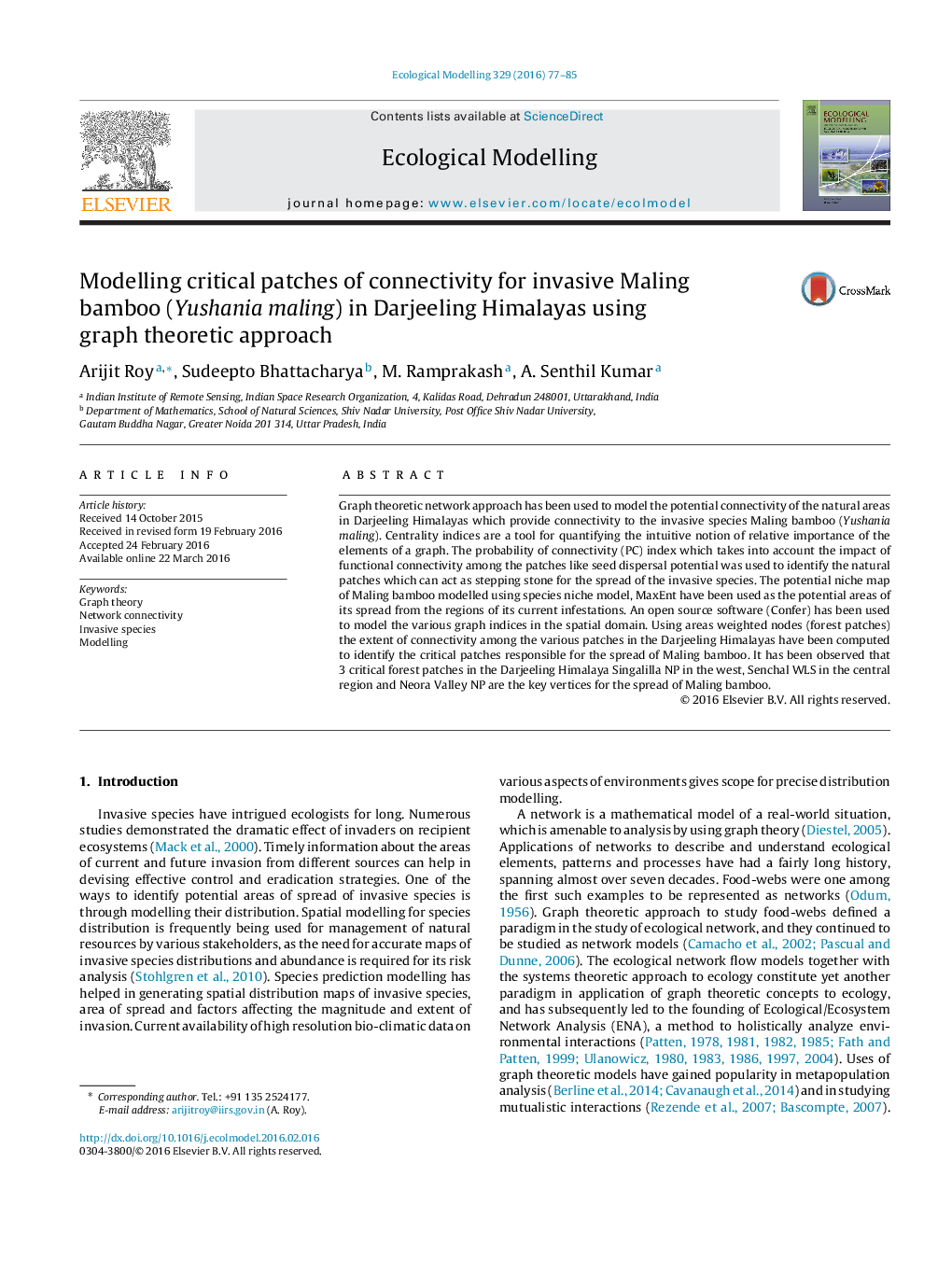| Article ID | Journal | Published Year | Pages | File Type |
|---|---|---|---|---|
| 4375570 | Ecological Modelling | 2016 | 9 Pages |
•Graph theory with species distribution can predict critical forest patch connectivity.•Centrality index (PC) represents functional aspect of ecological connectivity.
Graph theoretic network approach has been used to model the potential connectivity of the natural areas in Darjeeling Himalayas which provide connectivity to the invasive species Maling bamboo (Yushania maling). Centrality indices are a tool for quantifying the intuitive notion of relative importance of the elements of a graph. The probability of connectivity (PC) index which takes into account the impact of functional connectivity among the patches like seed dispersal potential was used to identify the natural patches which can act as stepping stone for the spread of the invasive species. The potential niche map of Maling bamboo modelled using species niche model, MaxEnt have been used as the potential areas of its spread from the regions of its current infestations. An open source software (Confer) has been used to model the various graph indices in the spatial domain. Using areas weighted nodes (forest patches) the extent of connectivity among the various patches in the Darjeeling Himalayas have been computed to identify the critical patches responsible for the spread of Maling bamboo. It has been observed that 3 critical forest patches in the Darjeeling Himalaya Singalilla NP in the west, Senchal WLS in the central region and Neora Valley NP are the key vertices for the spread of Maling bamboo.
Graphical abstractFigure optionsDownload full-size imageDownload as PowerPoint slide
